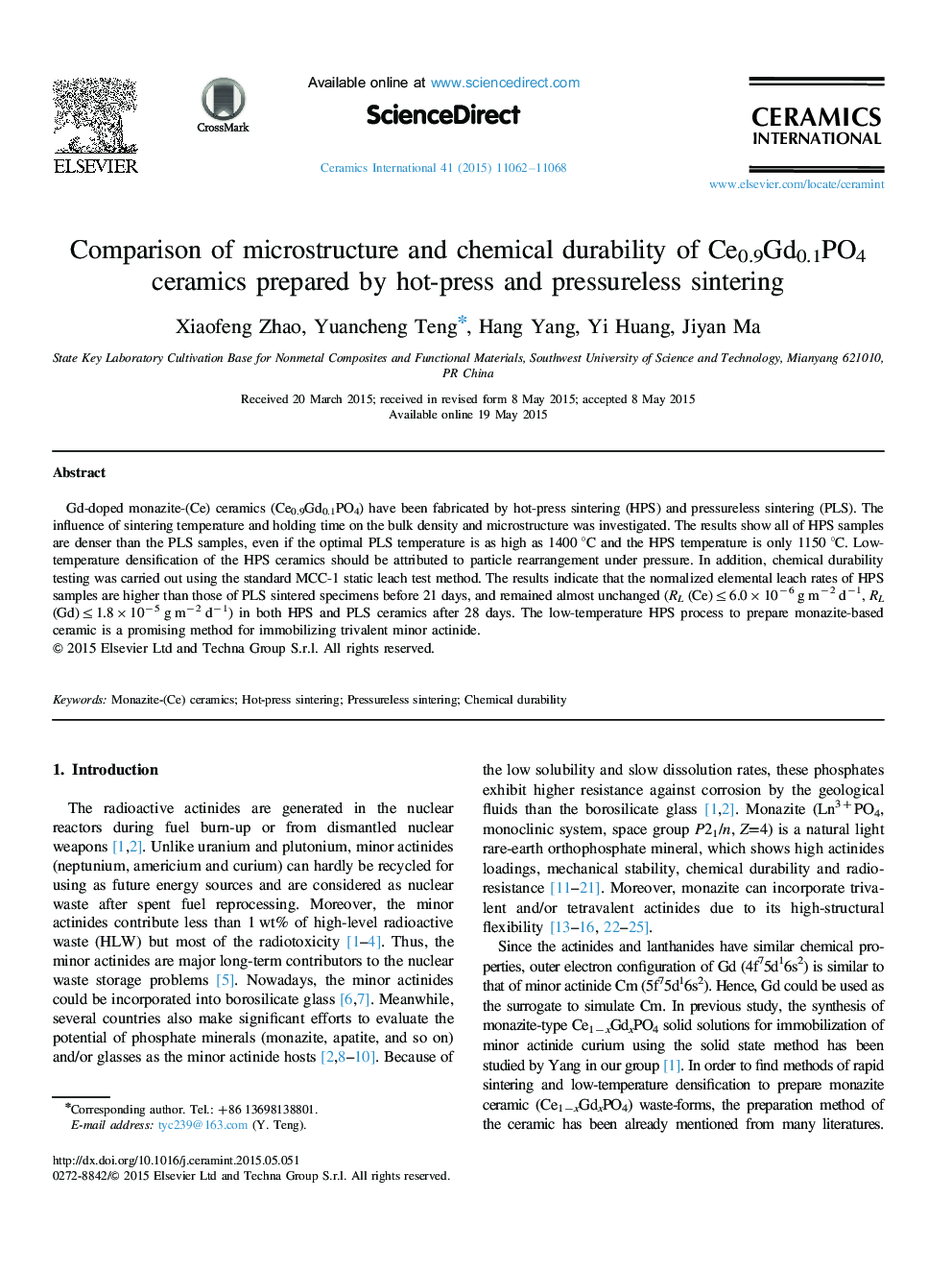| Article ID | Journal | Published Year | Pages | File Type |
|---|---|---|---|---|
| 1460076 | Ceramics International | 2015 | 7 Pages |
Gd-doped monazite-(Ce) ceramics (Ce0.9Gd0.1PO4) have been fabricated by hot-press sintering (HPS) and pressureless sintering (PLS). The influence of sintering temperature and holding time on the bulk density and microstructure was investigated. The results show all of HPS samples are denser than the PLS samples, even if the optimal PLS temperature is as high as 1400 °C and the HPS temperature is only 1150 °C. Low-temperature densification of the HPS ceramics should be attributed to particle rearrangement under pressure. In addition, chemical durability testing was carried out using the standard MCC-1 static leach test method. The results indicate that the normalized elemental leach rates of HPS samples are higher than those of PLS sintered specimens before 21 days, and remained almost unchanged (RL (Ce)≤6.0×10−6 g m−2 d−1, RL (Gd)≤1.8×10−5 g m−2 d−1) in both HPS and PLS ceramics after 28 days. The low-temperature HPS process to prepare monazite-based ceramic is a promising method for immobilizing trivalent minor actinide.
